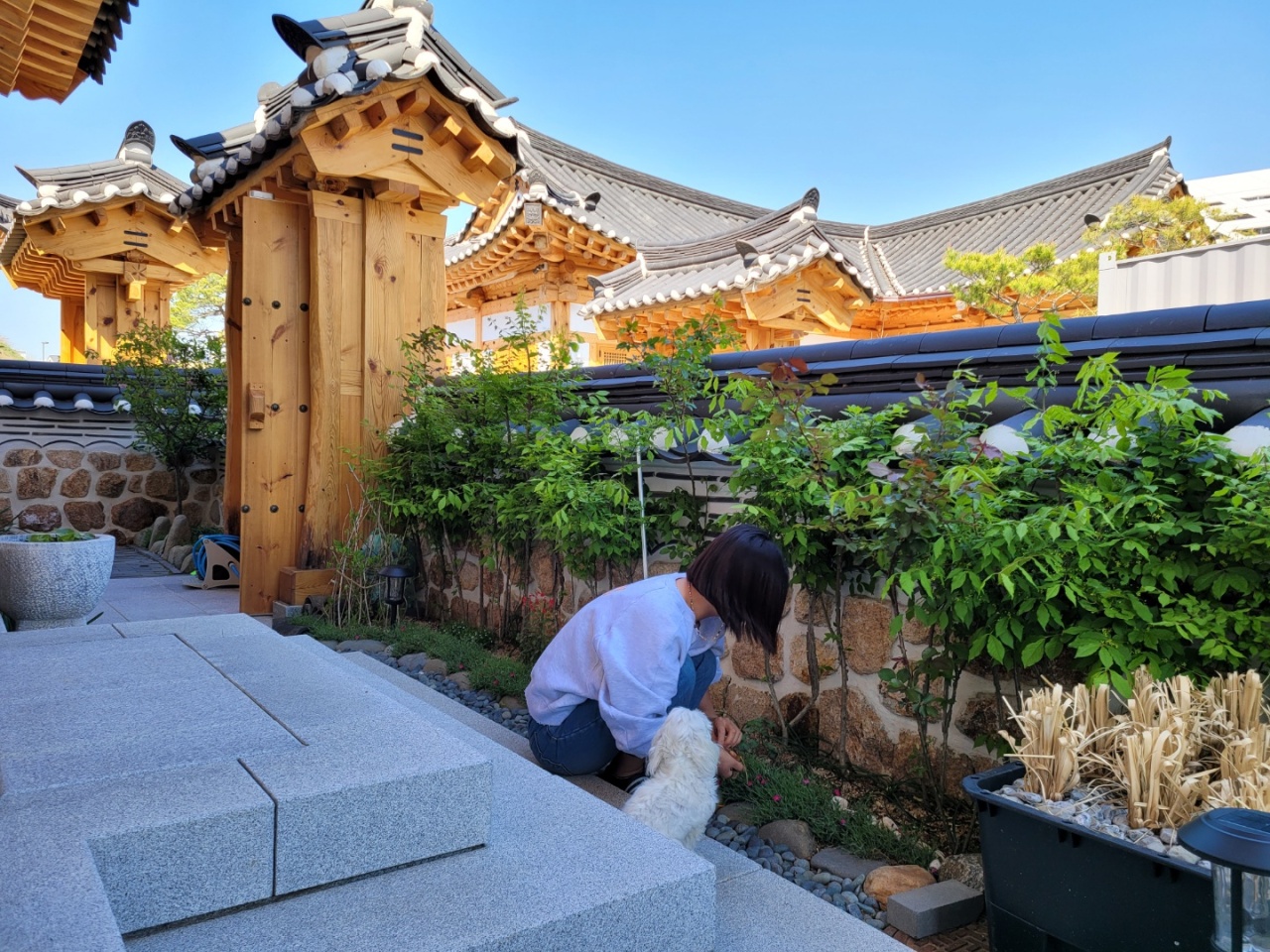 |
A resident of the hanok town in Sejong City trims plants at her house. (Park Yuna/The Korea Herald) |
Following is the second article in a three-part series that explores housing in the post-pandemic era. -- Ed.
Although many architects have voiced the need to diversify the residential environment in South Korea, where standardized large-scale apartment complexes are the dominant form of housing, change has been slow as apartments are considered investments. Yet the COVID-19 pandemic has intensified the need for discussions on the residential environment in Korea and has accelerated some changes.
Changes are coming about gradually, beginning with the revival of the long-neglected function of outdoor balconies. Balconies are now valued for facilitating interaction with others as well as opening up homes to the outdoors and nature.
There are also signs of an exodus from apartments. Some people are seeking alternatives to apartments, such as detached family houses, as they look to change their lifestyles in response to the prolonged pandemic.
Experiment in Sejong
In Sejong, an administrative city 120 kilometers south of Seoul, a cluster of houses nicknamed Gil Madang stands across from a high-rise apartment complex. It was designed to encourage interaction among neighbors by creating narrow alleys between houses where residents may have chance encounters, greet each other and engage in conversation.
Inspired by the traditional villages of yore, Gil Madang was planned as part of the city’s ongoing initiative to diversify forms of residential housing in Korea.
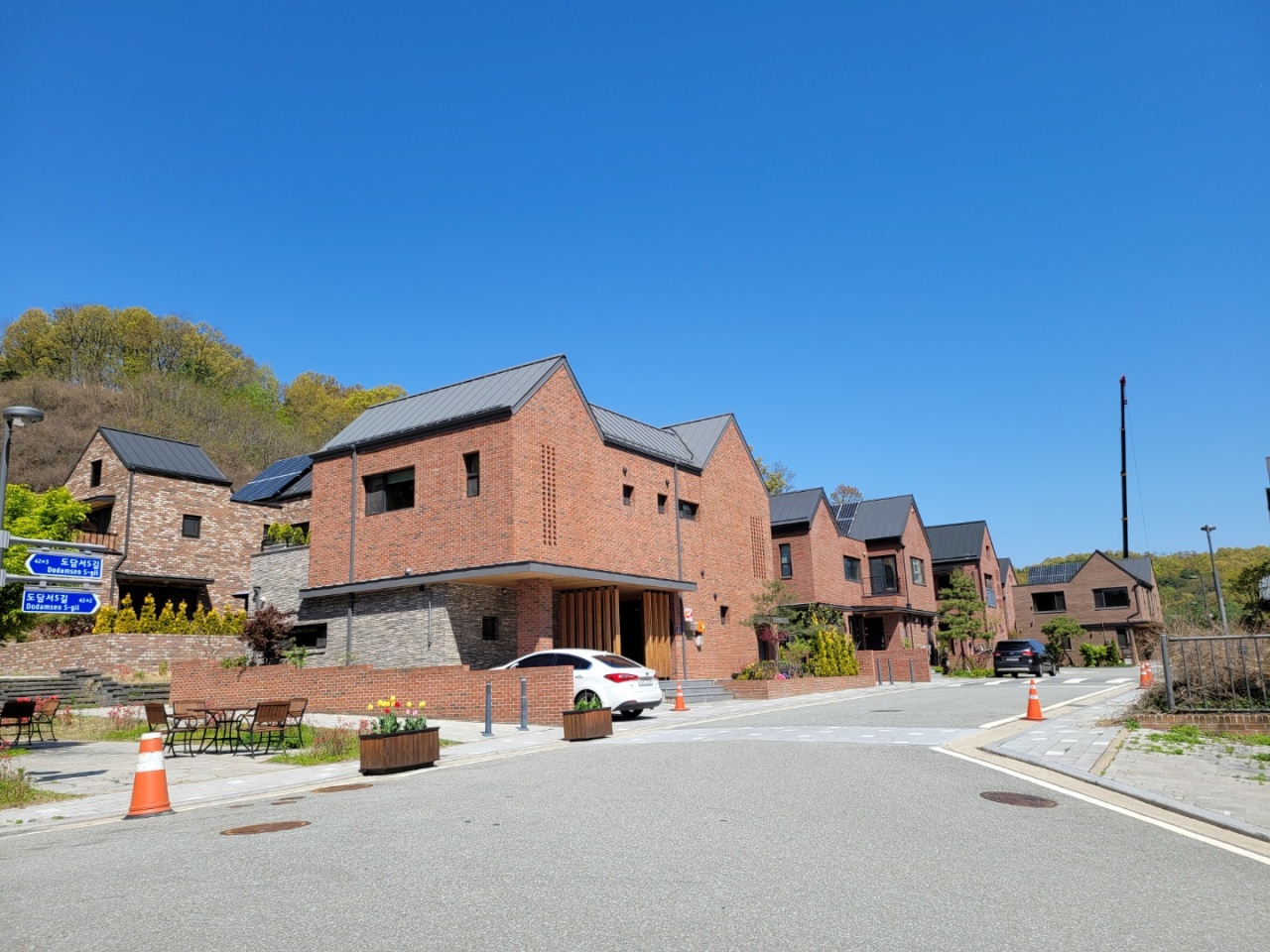 |
“Gil madang” town in Sejong City, which was inspired by traditional Korean village. (Park Yuna/The Korea Herald) |
Architect Kim Uk-joong, who planned the area, said he wanted to incorporate the characteristics of the Korea’s traditional villages, where houses are interconnected to create a strong community.
“Do the existing apartments in Korea guarantee happiness to families?” the architect asks.
“It is ridiculous that many Korean consumers are particular about designs and functions when they buy a smartphone, but when it comes to their living environment, they just move into standardized and mass-constructed apartments without any agonies,” the architect said.
Park In-hyang, 43, a mother of three, moved to the area in April last year after having lived in apartments her whole life. What is most satisfying about the new living environment is that she does not have to worry about interfloor noise, which has become a societal issue. She is also glad to have some interaction with neighbors that she did not have in an apartment environment.
“I have two sons who go to elementary school, and they can play without worrying about the neighbors downstairs complaining about noise. Unlike when we lived in apartments, we know who is living in the town and people used to organize sports days and music events before the pandemic,” Park said.
“I was worried at first when I moved in, but the interaction-based community seems to make people watch over each other’s houses, eliminating my prejudice that houses are not safe in terms of security,” Park added.
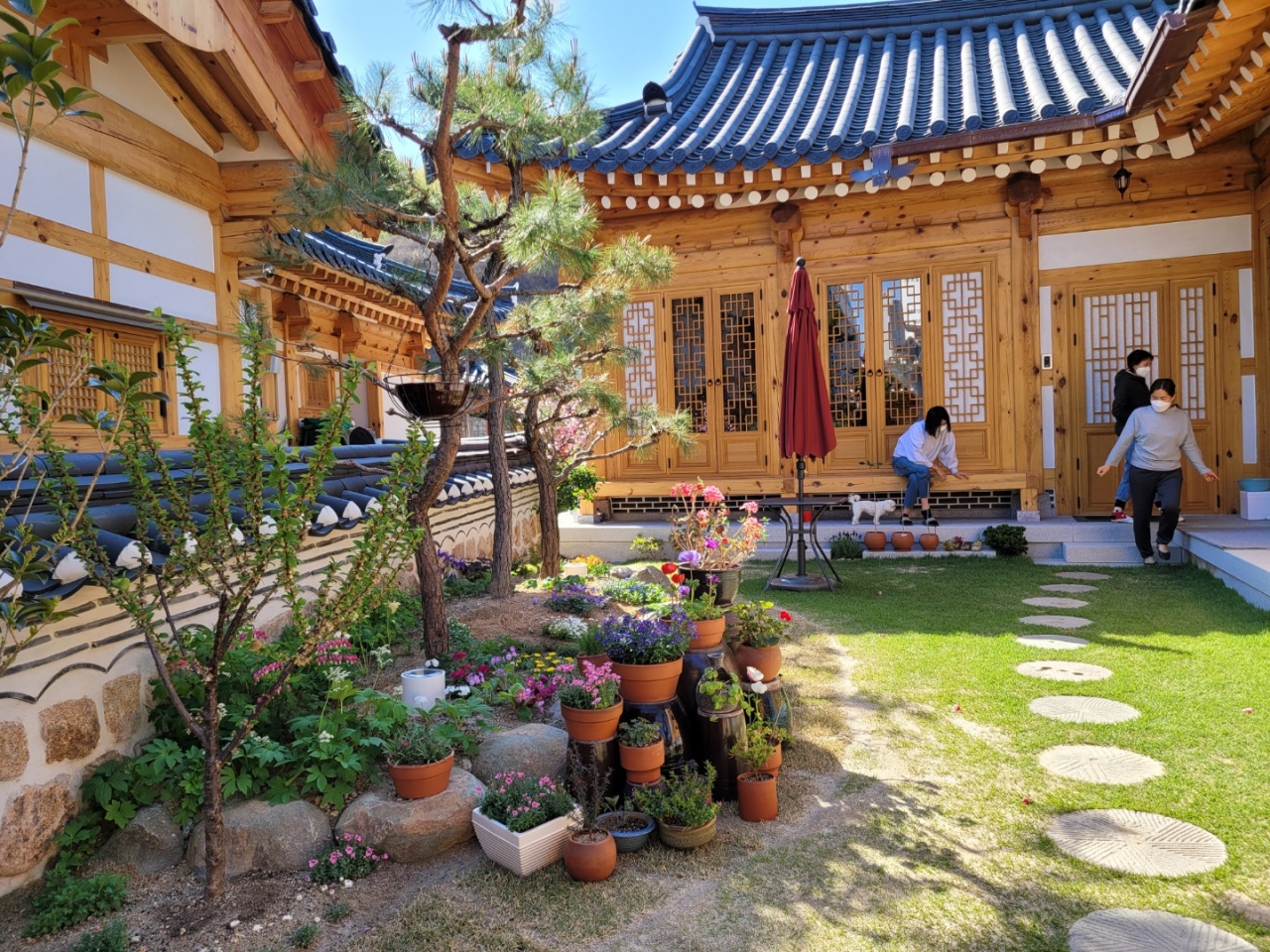 |
Residents of the hanok town in Sejong City interact with neighbors. (Park Yuna/The Korea Herald) |
Another housing complex -- called Hanok Town, consisting of modern hanok, or traditional Korean houses -- is under construction in Sejong. Construction is expected to be completed in May 2022. Kim Yong-su, 50, is one of the first residents who moved in shortly after the pandemic started in March last year. The modern hanok came with a small yard.
“I love living here. I don’t feel imprisoned in the house, although we stay at home all day due to the pandemic. This is because we have a yard,” Kim said while trimming flowers there. “There is also energy from the ground. My neighbor said she feels less tired when she wakes up in the morning as she lives closer to the ground compared to when she lived in an apartment.”
Hanok Town is popular among those who are tired of apartment living, according to the National Agency for Administrative City Construction.
New balcony culture
While some are turning their eyes to free-standing houses, some architects say changes are being made to standardized apartments, taking advantage of the pandemic. One significant change is the increasing demand for balconies that bring the outdoors inside.
For decades, apartment residents converted their balconies to secure more indoor space. In 2005, this practice became legal.
“It was because the government set the 85-square-meter apartment as the standard middle-class housing, offering tax benefits that major construction firms began to build apartments of that size,” said Yoo Hyun-joon, the owner of Hyunjoon Yoo Architects and a professor at Hongik University. “As people began to have more furniture -- for example, we began to sleep on beds instead of the floor -- people chose to eliminate the balcony to merge with the indoor space.”
But the trend has changed recently, particularly since the pandemic crisis started.
“I had to make efforts to secure balcony space for a better living environment, but now construction firms offer to design apartments with balcony space. The trend is noticeable among upscale apartments,” Yoo said.
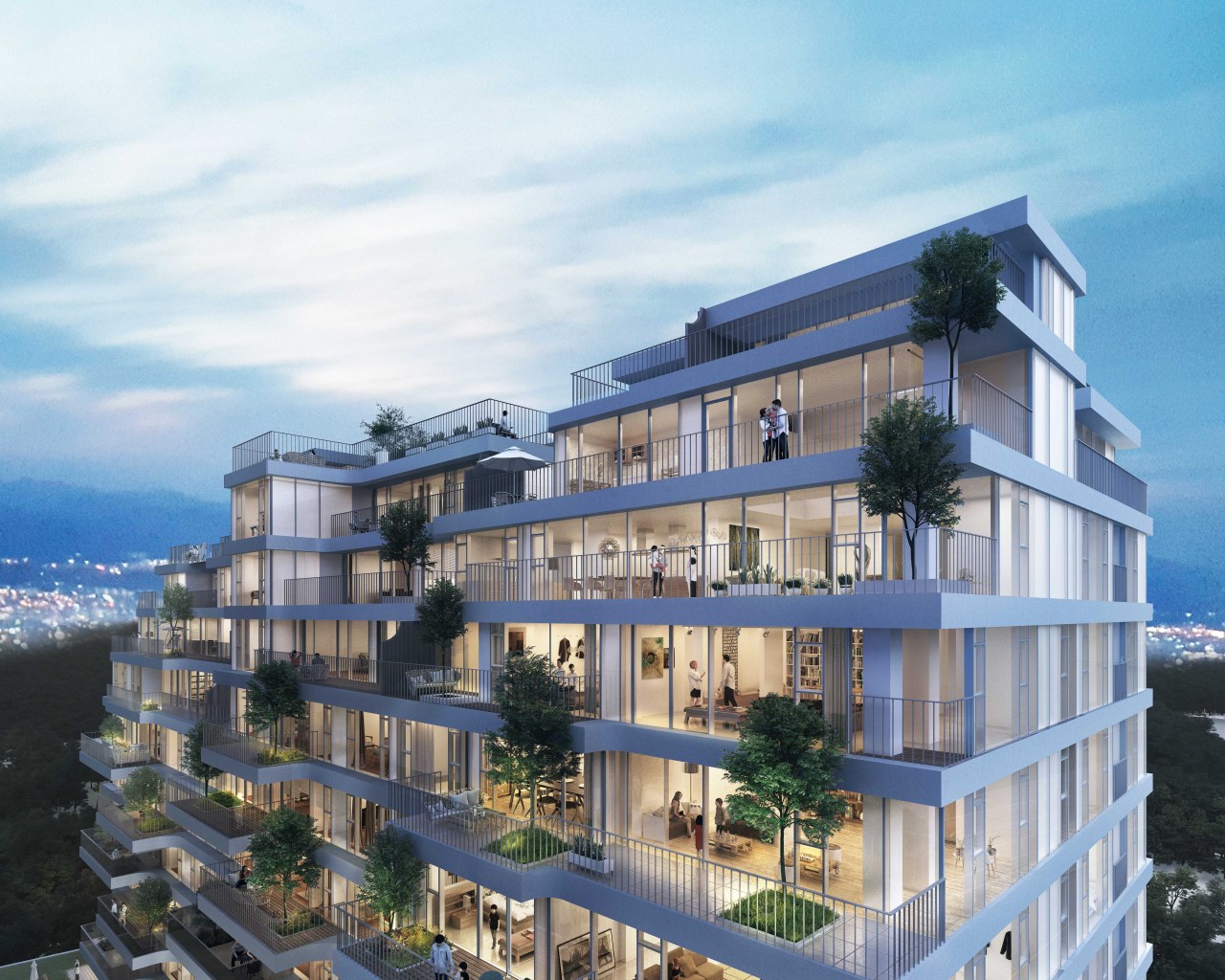 |
A 3D image rendering of the AFER Hangang that features external balconies for all units. (Hyunjoon Yoo Architects) |
Architect Lee Jung-seung from Gansam Architects and Partners, who won the Korean Architecture Award last year for a multiunit house in Gugi-dong, central Seoul, said designing the multiunit house with balconies was a “foolish suggestion” at the time when he planned the house two years ago.
“A balcony is like an intermediate space that connects residents to the city but also moderately separates them from the outside space. If they do not have such place like a balcony, people will tend to isolate themselves completely from society,” Lee said. “It will take time to apply such changes to large-scale apartment complexes because apartments are investments for many Koreans. So it is important to secure universal features of existing apartments, then attempt some small experiments to bring about gradual changes.”
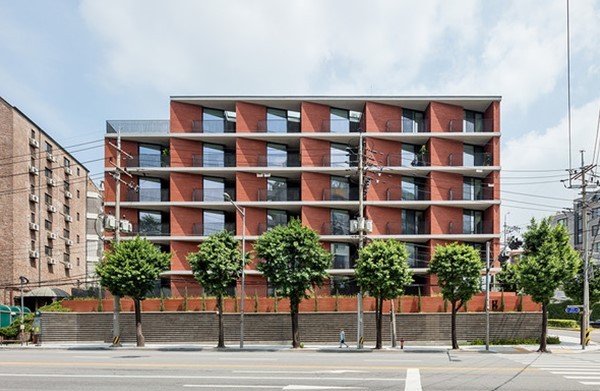 |
The award-winning multi-unit house in Gugi-dong, Seoul that highlights the function of balconies (Gansam Architects & Partners) |
Last November, the Seoul Metropolitan Government established the standard for balconies in residential homes, reflecting the increasing demand for balconies in pandemic times and restoring the initial purpose of a balcony as a place where people could relax in nature. According to the city government’s new guidelines, balconies are allowed for residential architecture but buildings with 21 floors or more need to undergo a safety review before open balconies can be installed.
“We did not have outdoor space in our living environment for decades because we focused on expanding indoor space,” said Nam Seong-woo, a researcher at the Architecture and Urban Research Institute. “Balcony culture is new to Korea and a change that the pandemic has accelerated. We need to monitor people’s responses to having balcony spaces and make gradual improvements.”
By Park Yuna (
yunapark@heraldcorp.com)








![[Herald Interview] 'Trump will use tariffs as first line of defense for American manufacturing'](http://res.heraldm.com/phpwas/restmb_idxmake.php?idx=644&simg=/content/image/2024/11/26/20241126050017_0.jpg)


![[Herald Review] 'Gangnam B-Side' combines social realism with masterful suspense, performance](http://res.heraldm.com/phpwas/restmb_idxmake.php?idx=644&simg=/content/image/2024/11/25/20241125050072_0.jpg)
![[Health and care] Getting cancer young: Why cancer isn’t just an older person’s battle](http://res.heraldm.com/phpwas/restmb_idxmake.php?idx=644&simg=/content/image/2024/11/26/20241126050043_0.jpg)